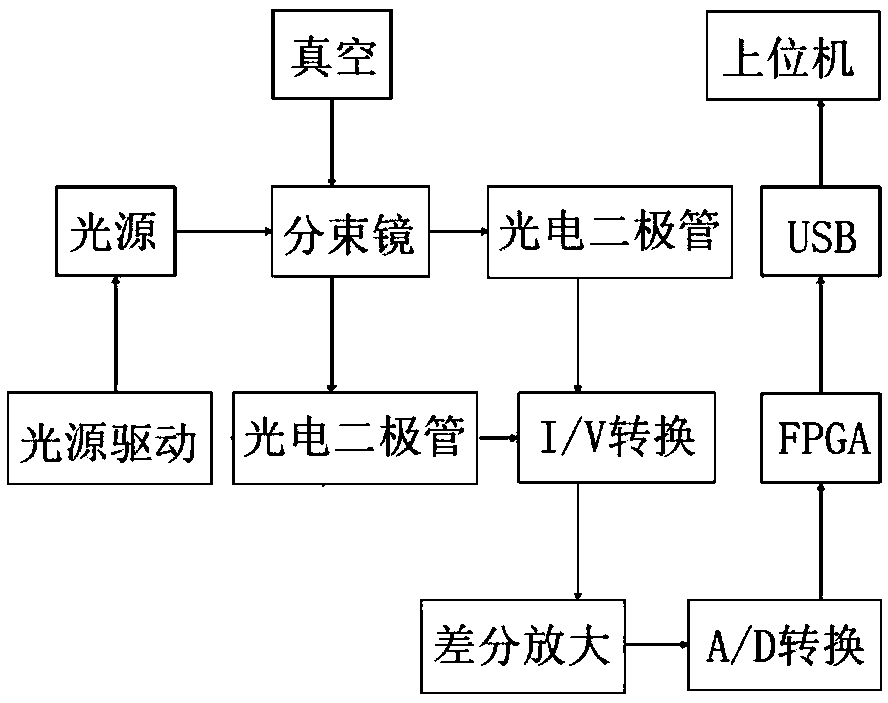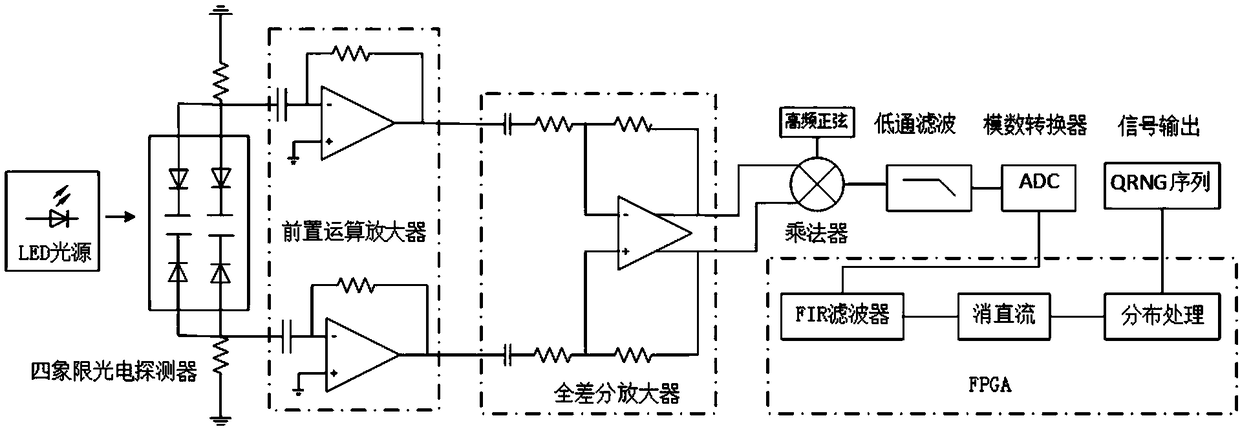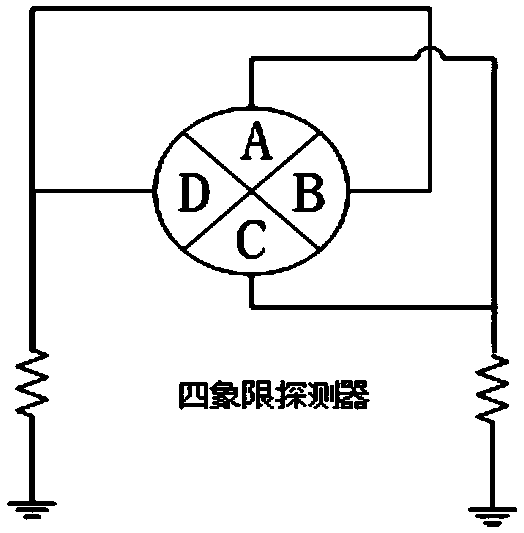Full differential equalization random number generating method based on optical quantum four-quadrant detection
A four-quadrant detection and optical quantum technology, which is applied in the field of cryptography, can solve the problems of reducing system accuracy, laser pulse signal distortion, and energy storage capacitor charge leakage, etc., to eliminate common-mode interference signals, eliminate individual differences, and eliminate signal distortion. Effect
- Summary
- Abstract
- Description
- Claims
- Application Information
AI Technical Summary
Problems solved by technology
Method used
Image
Examples
Embodiment 1
[0031] The specific implementation steps include:
[0032] as attached image 3 As shown, the four-quadrant photodetector includes four pixels A, B, C, and D that are uniformly distributed in a radial order, and the diagonal pixels AC and BD of the four-quadrant photodetector are parallel-connected respectively, so that When extracting two photocurrent signals, the requirement for consistency of the four pixels is reduced, and the uniformity of the output signal is improved when there is a slight deviation between the light source and the installation center point of the detector. The four-quadrant photodetectors are connected in parallel through diagonal pixels; the LED lamp emits light with a central wavelength of 870nm, which is coupled to the four-quadrant photodetectors, and the two quadrant photodetectors are connected in parallel to obtain two At this time, adjust the angle of the LED light to make the photocurrent of the two signals equal.
[0033] Two symmetrical pr...
PUM
| Property | Measurement | Unit |
|---|---|---|
| Center wavelength | aaaaa | aaaaa |
Abstract
Description
Claims
Application Information
 Login to View More
Login to View More - R&D
- Intellectual Property
- Life Sciences
- Materials
- Tech Scout
- Unparalleled Data Quality
- Higher Quality Content
- 60% Fewer Hallucinations
Browse by: Latest US Patents, China's latest patents, Technical Efficacy Thesaurus, Application Domain, Technology Topic, Popular Technical Reports.
© 2025 PatSnap. All rights reserved.Legal|Privacy policy|Modern Slavery Act Transparency Statement|Sitemap|About US| Contact US: help@patsnap.com



